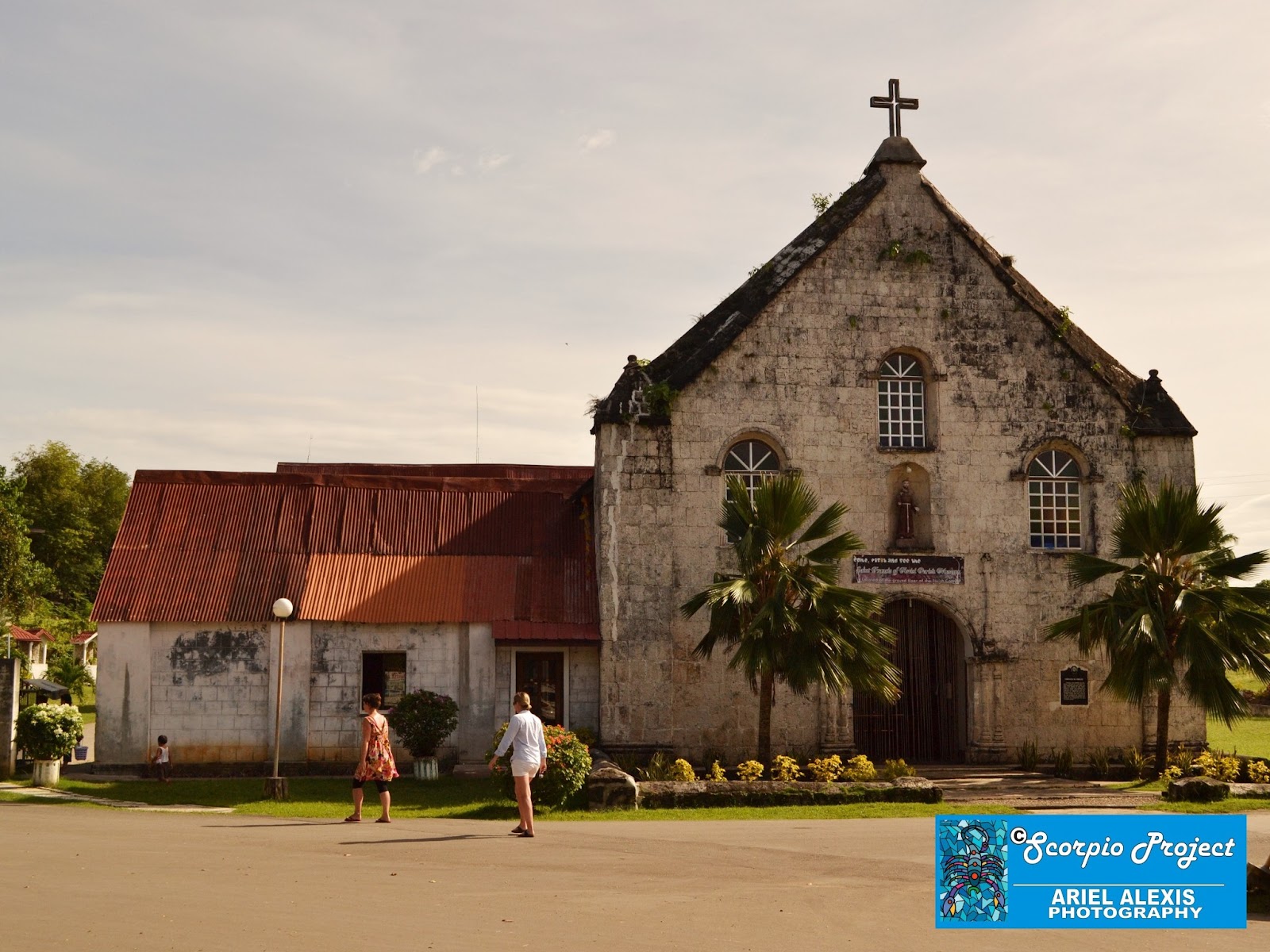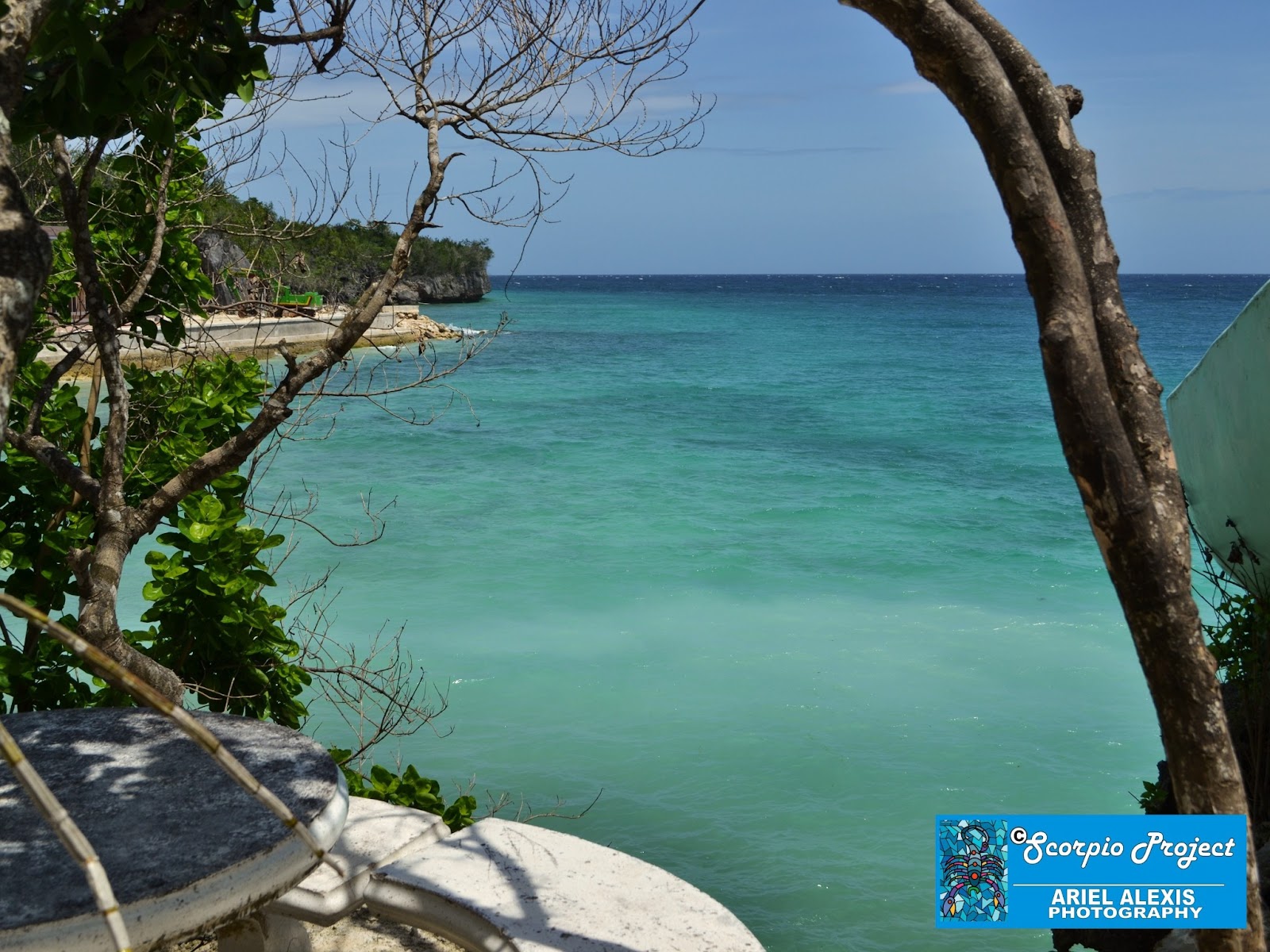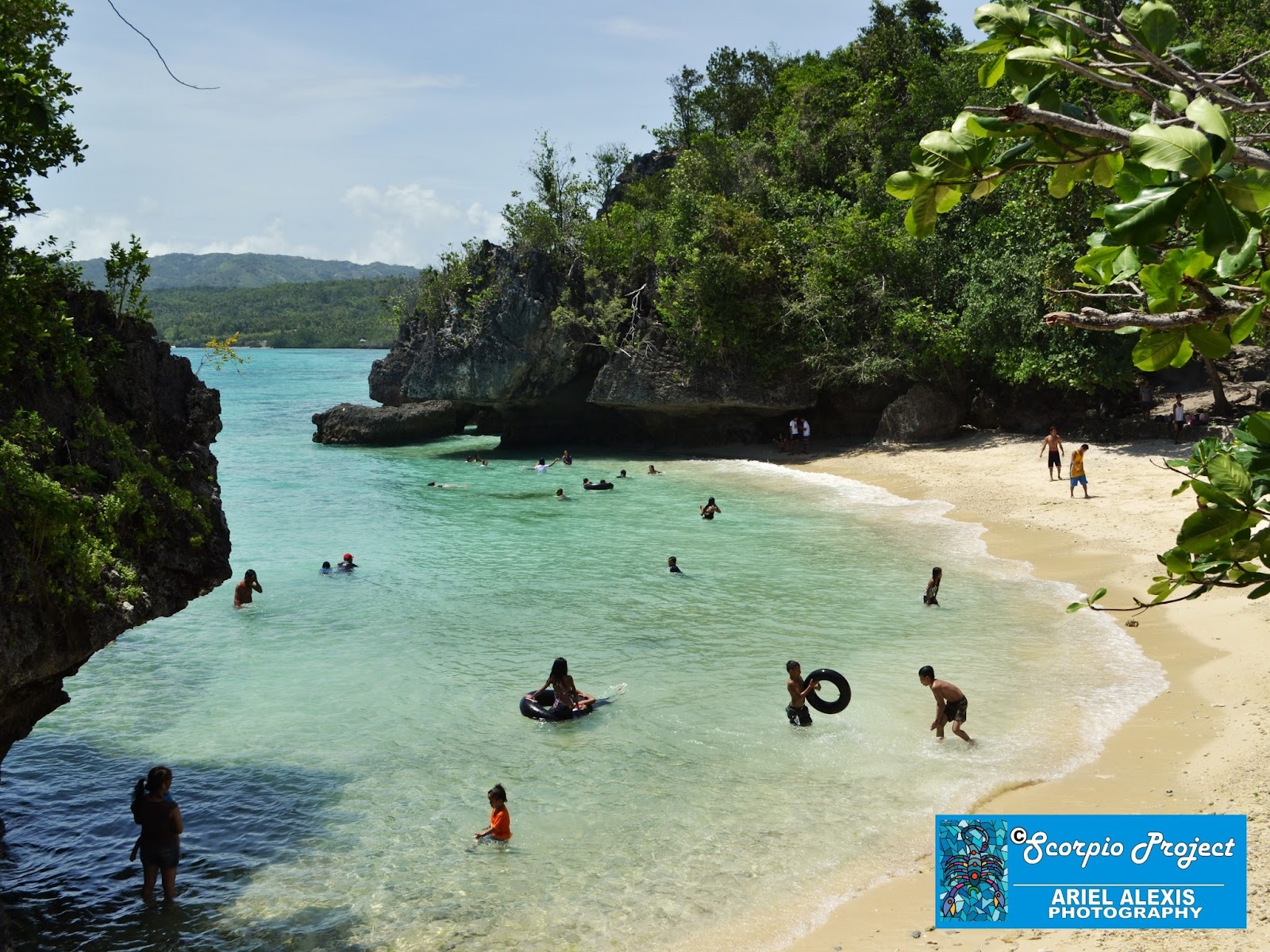It would astonish
outsiders to know that the hype about Siquijor’s alleged penchant for black
magic somewhat contradicts the islanders’ religious devotion, the roots of
which date back over 400 years ago after the island’s discovery by Spanish
conquistadors. For a place reputed to be a haven for sorcery, I found it strange
to see a people so devout to Christianity as the Siquijodnons who happen to be
among the first Pinoys to be converted to the faith by the Augustinian
Recollects.
 Today, many
Siquijodnons continue to practice their faith to the hilt, carrying on time-honored
customs with fervor, firmness and flamboyance. Steeped in tradition, these
Cebuano-speaking, pious folks regularly hear masses, participate in the sacraments, celebrate the
feast days of their patron saints, join prayer vigils and processions, and take
part in other religious rituals of the Catholic faith, especially during Holy Week.
Today, many
Siquijodnons continue to practice their faith to the hilt, carrying on time-honored
customs with fervor, firmness and flamboyance. Steeped in tradition, these
Cebuano-speaking, pious folks regularly hear masses, participate in the sacraments, celebrate the
feast days of their patron saints, join prayer vigils and processions, and take
part in other religious rituals of the Catholic faith, especially during Holy Week.  |
| St. Francis of Assisi Church |
 Mind you, I witnessed these things for myself while going around
some of the island’s most prominent destinations that are known for their
historical and spiritual values. Anyone who visits Siquijor shouldn’t dare miss
the chance to see its ancient churches, particularly St. Francis of Assisi
Church in the town of Siquijor and St. Isidore the Farmer (San Isidro Labrador)
Parish Church in the town of Lazi.
Mind you, I witnessed these things for myself while going around
some of the island’s most prominent destinations that are known for their
historical and spiritual values. Anyone who visits Siquijor shouldn’t dare miss
the chance to see its ancient churches, particularly St. Francis of Assisi
Church in the town of Siquijor and St. Isidore the Farmer (San Isidro Labrador)
Parish Church in the town of Lazi.  Dedicated to St.
Francis of Assisi, the small coral-stone house of worship is just a stone’s
throw away from the pantalan (pier).
One of the striking features of this church is its belfry dating back to 1783
which also doubled as a lookout tower against Moro pirates during those times. I
wanted to climb its squeaky spiral staircase but I changed my mind for fear
that the dilapidated wooden stairs would give in.
Dedicated to St.
Francis of Assisi, the small coral-stone house of worship is just a stone’s
throw away from the pantalan (pier).
One of the striking features of this church is its belfry dating back to 1783
which also doubled as a lookout tower against Moro pirates during those times. I
wanted to climb its squeaky spiral staircase but I changed my mind for fear
that the dilapidated wooden stairs would give in.  |
| Lazi convent |
Just across the church stands the U-shaped, two-storey convent—reputedly the country’s oldest and largest—which Spanish friars used as their recreation and retirement facility. The upper floor of the crumbling structure has been converted into a museum. There, I lingered for some time to gaze at the historical treasures of Siquijor—life-size statues of saints, antique furniture and relics that are on display. Too bad, picture taking isn’t allowed in there. Both the convent and the church have been declared as national shrines.
 Fond of seascapes, I
kicked off my second day in the island by combing its palm-fringed, white-sand
beaches whose inviting waters are great for fishing, sailing, scuba diving and
swimming. Topping my list was Salagdoong Beach Resort in the town of Maria. Because
the beautiful beaches attract the crowds, the provincial government has poured
money to improve the resort, even putting up a few years back the two-storey
Hotel Agripino, which offers reasonably-priced accommodations.
Fond of seascapes, I
kicked off my second day in the island by combing its palm-fringed, white-sand
beaches whose inviting waters are great for fishing, sailing, scuba diving and
swimming. Topping my list was Salagdoong Beach Resort in the town of Maria. Because
the beautiful beaches attract the crowds, the provincial government has poured
money to improve the resort, even putting up a few years back the two-storey
Hotel Agripino, which offers reasonably-priced accommodations. For me, Salagdoong is
the perfect hideaway for the world-weary to sit back, where the blue sky converges
with the emerald sea to create a fusion of grace, serenity and harmony. And who
could ever forget that promontory by the beach which doubles as a diving board
for intrepid divers and swimmers like those teeners who amazed me with their acrobatic
skills as they took turns in plunging into the deep emerald waters of
Salagdoong? Whew, quite a Hitchcockian scene over there!
For me, Salagdoong is
the perfect hideaway for the world-weary to sit back, where the blue sky converges
with the emerald sea to create a fusion of grace, serenity and harmony. And who
could ever forget that promontory by the beach which doubles as a diving board
for intrepid divers and swimmers like those teeners who amazed me with their acrobatic
skills as they took turns in plunging into the deep emerald waters of
Salagdoong? Whew, quite a Hitchcockian scene over there!  Waterfalls abound in
Siquijor and I was fortunate to see at least two: Cambugahay and Lugnason.
Found in Lazi, Cambugahay Falls can be a challenge to the acrophobic and the
faint-hearted since one has to negotiate through a steep gorge to get to the
cascade. I almost lost my balance there during my first trip to Siquijor so I
was extra careful the second time around. Good thing, the local government has constructed
a stone stairway down the narrow trail all the way to the falls.
Waterfalls abound in
Siquijor and I was fortunate to see at least two: Cambugahay and Lugnason.
Found in Lazi, Cambugahay Falls can be a challenge to the acrophobic and the
faint-hearted since one has to negotiate through a steep gorge to get to the
cascade. I almost lost my balance there during my first trip to Siquijor so I
was extra careful the second time around. Good thing, the local government has constructed
a stone stairway down the narrow trail all the way to the falls. |
| Lugnason Falls |
 Meanwhile, I came
across Lugnason Falls when the habal-habal
driver I hired tipped me about it. Unlike Cambugahay which is included among
the prime attractions of the island, Lugnason is largely unheard of. There’s
hardly any sign leading tourists to the cascade but I managed to get there,
thanks to my reliable habal-habal
driver. Opened to the public about three years ago, Lugnason Falls, which is found in
the town of San Juan, is very accessible from the highway. Just flag down a
motorbike and tell the driver to take you there. To see the falls up close and
personal, one has to go down a short but slippery trail which can be
treacherous when wet.
Meanwhile, I came
across Lugnason Falls when the habal-habal
driver I hired tipped me about it. Unlike Cambugahay which is included among
the prime attractions of the island, Lugnason is largely unheard of. There’s
hardly any sign leading tourists to the cascade but I managed to get there,
thanks to my reliable habal-habal
driver. Opened to the public about three years ago, Lugnason Falls, which is found in
the town of San Juan, is very accessible from the highway. Just flag down a
motorbike and tell the driver to take you there. To see the falls up close and
personal, one has to go down a short but slippery trail which can be
treacherous when wet. |
| Siquijor as seen atop Mt. Bandilaan |
 Reaching the top of
Mt. Bandilaan National Park, the highest point in Siquijor, proved to be the climax of my recent sojourn.
Located in the outskirts of the capital town, the natural park is a perfect
picnic ground for campers and outdoor enthusiasts with its tall trees providing
cool and shade. There are also benches where hikers can sit and pause for a
break. Every Black Saturday, Bandilaan teems with herbalists and folk healers
all over the country who flock to participate in the so-called Healing Festival
wherein they prepare various herbal concoctions known to have medicinal powers.
Reaching the top of
Mt. Bandilaan National Park, the highest point in Siquijor, proved to be the climax of my recent sojourn.
Located in the outskirts of the capital town, the natural park is a perfect
picnic ground for campers and outdoor enthusiasts with its tall trees providing
cool and shade. There are also benches where hikers can sit and pause for a
break. Every Black Saturday, Bandilaan teems with herbalists and folk healers
all over the country who flock to participate in the so-called Healing Festival
wherein they prepare various herbal concoctions known to have medicinal powers.
Near the park are
numerous interesting places: a shrine of Our Lady of Lourdes, Stations of the
Cross, a butterfly sanctuary and a watchtower which I climbed all the way to
the top. For that derring-do, I was rewarded with a dizzying but dazzling view
of Siquijor and the deep blue sea around it. I haven’t scaled heights for the longest
time so the experience proved to be a challenging and invigorating one for me. On
a clear day, one can see the islands of Negros and Cebu just across Siquijor.
Despite the overflowing
potentials I’ve mentioned, Siquijor’s tourism has yet to hit the big time. I
guess access to the tourist spots still leaves much to be desired. The local governmn.ent should invest more on tourism
infrastructure and transport facilities to improve accessibility. The islanders
themselves, with the help of the drumbeaters at the Department of Tourism, should
also find more ways to better promote Siquijor as a destination of choice to attract
potential investors and tourists.
 Once all these fall
into place, I won’t be surprised if throngs of local and foreign visitors would
be smitten by the island’s spellbinding beauty. Who knows, it would even pop up
at the top five of every traveler’s list of must-visit places in the
Philippines! When that day comes, I can only hope that the island’s good-natured
folks would have taken measures to spare Siquijor from the crass commercialism
that’s wreaking havoc in other oft-visited islands of the country. :D
Once all these fall
into place, I won’t be surprised if throngs of local and foreign visitors would
be smitten by the island’s spellbinding beauty. Who knows, it would even pop up
at the top five of every traveler’s list of must-visit places in the
Philippines! When that day comes, I can only hope that the island’s good-natured
folks would have taken measures to spare Siquijor from the crass commercialism
that’s wreaking havoc in other oft-visited islands of the country. :DMore pics:
 |
 |
 |
 |
 |
 |
 |
 |
 |
 |
 |
 |
 |
 |
 |
 |
 |
 |







No comments:
Post a Comment